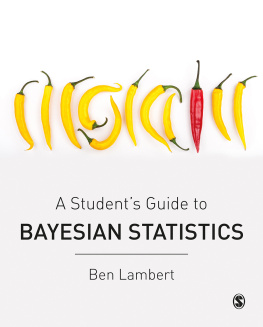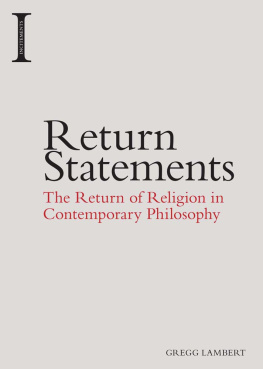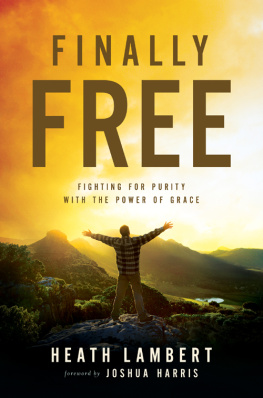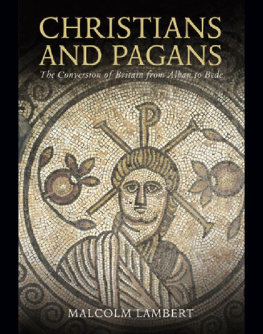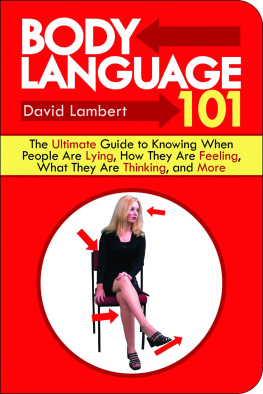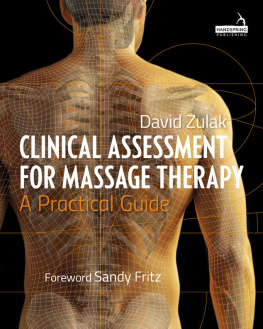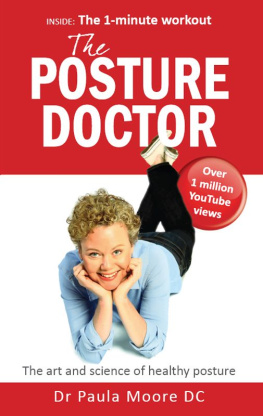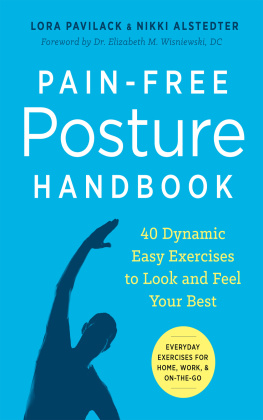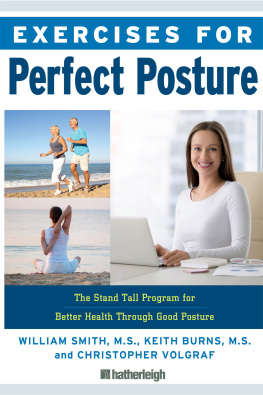Cover photo by Kalaivani Ramu, therapist Randee Engelhard, client Nancy Cavalie.
No part of this publication may be reproduced, stored in a retrieval system, or transmitted in any form or by any meanselectronic, photocopying, recording, or otherwisewithout prior written permission, except in the case of brief excerpts in critical reviews and articles. For permission requests, contact the author at .
All rights reserved.
Copyright 2021 Grace Lambert
ISBN: 9798715726292
The author disclaims responsibility for adverse effects or consequences from the misapplication or injudicious use of the information contained in this book. Mention of resources and associations does not imply an endorsement.
This book is dedicated to the clients we work with every day, whose commitment to the exercises we give them inspires us to carry on in our work to help others.
It is health that is real wealth, not pieces of gold or silver.
M AHATMA G ANDHI
Contents
INTRODUCTION
Helping others might not change the world, but it could change the world for one person.
A NONYMOUS
I am a member of a forum called P OSTURE A LLIANCE . Members are from all over the world, with the majority of us located in the United States. We are Posture Alignment Specialists (PAS), certified through the A number of us have years of experiencesome even decades working with clients and teachingand we offer workshops, study groups, and individual coaching to those with less experience. We share stories about clients who have become pain-free, clients who have improved their athletic performance or been able to return to sports or physical activities they love to do, and seniors or disabled clients who regain enough independence that they can resume their normal activities of daily living. Its a caring, cohesive group unified around our shared purpose of helping people improve their lives, and we offer each other ongoing support and encouragement.
One day, as I read yet another moving story about how one of my colleagues on the forum had helped a client regain her life, after living in pain for years, I thought, More people need to know about these transformations! This thought, coupled with my own experience with posture therapy, was catalyst enough for me to invite my colleagues to share their personal success stories, and stories of some of their clients. This book is the result of that invitation.
If you are one of the millions of people worldwide who suffer from chronic pain, we want you to know that there is a way for you to get yourself out of painand keep yourself out of painthat does not involve surgery or drugs or having someone else touch or manipulate your body. This is not to say that surgery, drugs, touch, or manipulation are bad; they are valid treatment options and can be very beneficial. Surgery, stitches, or setting a bone serves a useful purpose, as does massage, chiropractic adjustment, acupuncture, and physical or occupational therapy; and some drugs are obviously necessary and/or lifesaving. However, as you will find out from reading our stories, nearly every treatment option we tried failed to provide us with lasting pain relief or physical benefits. And then we discovered posture therapy. The simple exercises we each learned how to do, which were customized for our particular posture deviations, helped to get us out of pain. They are exactly the tools we needed to become self-sufficient, and we are committed to consistently using them to keep ourselves out of pain. We are certain these tools can work for you, too if you commit to using them.
After the first session, clients often ask, How did I not know about this? Sometimes theyll also ask, Why didnt my doctor tell me about this? These are valid questions that many of us asked in our first session. One reason people are not familiar with posture therapyhave never even heard of it, in factis because it is not widely talked about by our doctors or those from whom we usually first seek guidance, counsel, or treatment for pain: the traditional medical establishment. Posture therapy is not part of this establishment (aka mainstream medicine), which is governed by many legal constraints and rules of the health care and health insurance industries. Practitioners who are part of mainstream medicine generally refer their patients to other practitioners within that establishment. Many patients arent open to anything outside of it because they dont want to pay out of pocket, or they dont believe anything outside of mainstream medicine will work for them. Having tried every avenue available within the establishment without lasting success, people find themselves thinking that perhaps they have exhausted their options. They tend to become open to anything they think might help them, and so they broaden their search and it is then that they discover posture therapy. As you will learn when you read our stories, this is how some of us finally came to know about posture therapy.
Many posture therapists are not inclined to advertise or widely market themselves or their services. Instead, they rely on referrals from satisfied clients and from other practitioners with whom they network. Of course, referrals from happy clients are great and tend to foster trust in new clients, but imagine how many more people could benefit if posture therapy were as familiar to us all for the treatment of chronic pain and physical limitations as acupuncture, chiropractic, massage, and physical or occupational therapy? Those more commonly known therapies are certainly usefuland some of us still give and receive these kinds of treatmentsbut why not try posture therapy first when seeking relief from chronic pain and physical limitations, rather than last , only having learned about it after months (or years) of unsuccessful treatments? On the slim chance that posture therapy doesnt help you, these other options will still be available to investigate.
Heres a bit of a road map for the book to help you get started: If you want to jump straight to our personal stories, youll find them in Part II, along with stories and briefer testimonials from clients who benefited from posture therapy. If you prefer to start at the beginning, Part I explains how improving your posture improves your health, tells you why movement is so vital to your physical and cognitive development, and talks about the integral connection between your feet and your posture. In this section, youll also read about beliefs and learn how important they are in creating your mindset, shaping your reality, and influencing the outcome of whatever therapy or treatment you choose.
In Part III, we provide a list of conditions we treat, and then youll have a chance to explore your own posture deviations with some cues and clues about what to look for. (Note that this chapter may appeal to readers who just want a summary of why posture therapy can help them.) Next is a chapter with a list of resources, including for foot care, equipment we use, and books we recommend reading. All of the books mentioned in this book are listed there, as well as a few others that may be of interest to you. Following that youll find a directory of the therapists who shared their story, as well as a way to look up other P OSTURE A LLIANCE therapists. After that there is a glossary that defines all of the terms that appear in bold font throughout the book and lastly, author acknowledgements to all who helped to get this book written and published.
We hope our stories will help you understand that whether youre in chronic pain, have physical limitations, want to improve your athletic performance, or are just tired of feeling like you cant stand up straight for more than a few minutes, posture therapy can help you as it helped us. Try it, and discover for yourself the benefits of a straighter, stronger, healthier and more active body!



